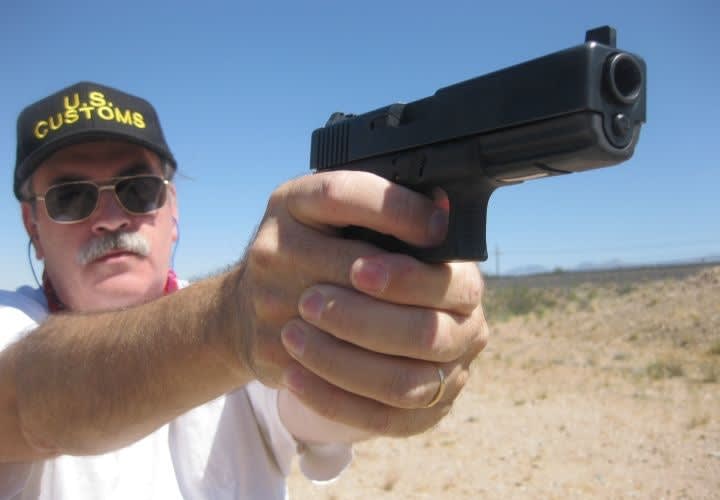It is also important to be skilled enough to use the least number of bullets possible to end any authorized use of deadly force situation to prevent the need for a combat reload in the presence of one or more adversaries. No matter how fast you can reload your firearm under stress, you risk exposure to attack and being overpowered, if you're alone and don't have suitable cover to hide behind when you execute a combat reload.
This is one reason it pays to carry a backup gun. Likewise, if your adversary is behind good cover, or is wearing body armor, you may have to "place your shots" in certain parts of your opponent's body, which is more likely to happen if you're a more proficient shooter.
After a great deal of experimentation, I have found that certain handguns with certain trigger systems tend to be easier to shoot with more precision than other makes and models. In my case, I can shoot faster and still deliver excellent connect-the-dots shot placement, when I shoot certain Glocks, certain SIGs, any well-made all-steel 1911 in 9mm or .45 ACP and various Smith & Wesson K- and L-frame revolvers such as my six-shot stainless steel .38 Special/.357 Magnum Model 686 with a four-inch barrel.
If you wish to train to improve your accurate rate of rapid or fast fire, you can practice different types of shooting drills that will enable you to hone your accuracy and rate of fire or speed with a patrol rifle and a handgun. You can begin by shooting slowly and working your way up to a faster pace, as long as you continue to deliver accurate shot placement. Or you can begin by shooting as quickly as you can pull the trigger, then back off until you find the right tempo that allows you to be a precision shooter. [PAGEBREAK]
To ensure you train properly, monitor your progress by inspecting your target after each drill and mark the hits and misses with a colored felt-tip pen. When you see one or more shots located outside of the scoring area that represents one or more misses, back off a bit and try the same drill again with a fully loaded firearm. This time, adjust your rate of fire by slowing down enough to find that perfect combination of speed and accuracy.












